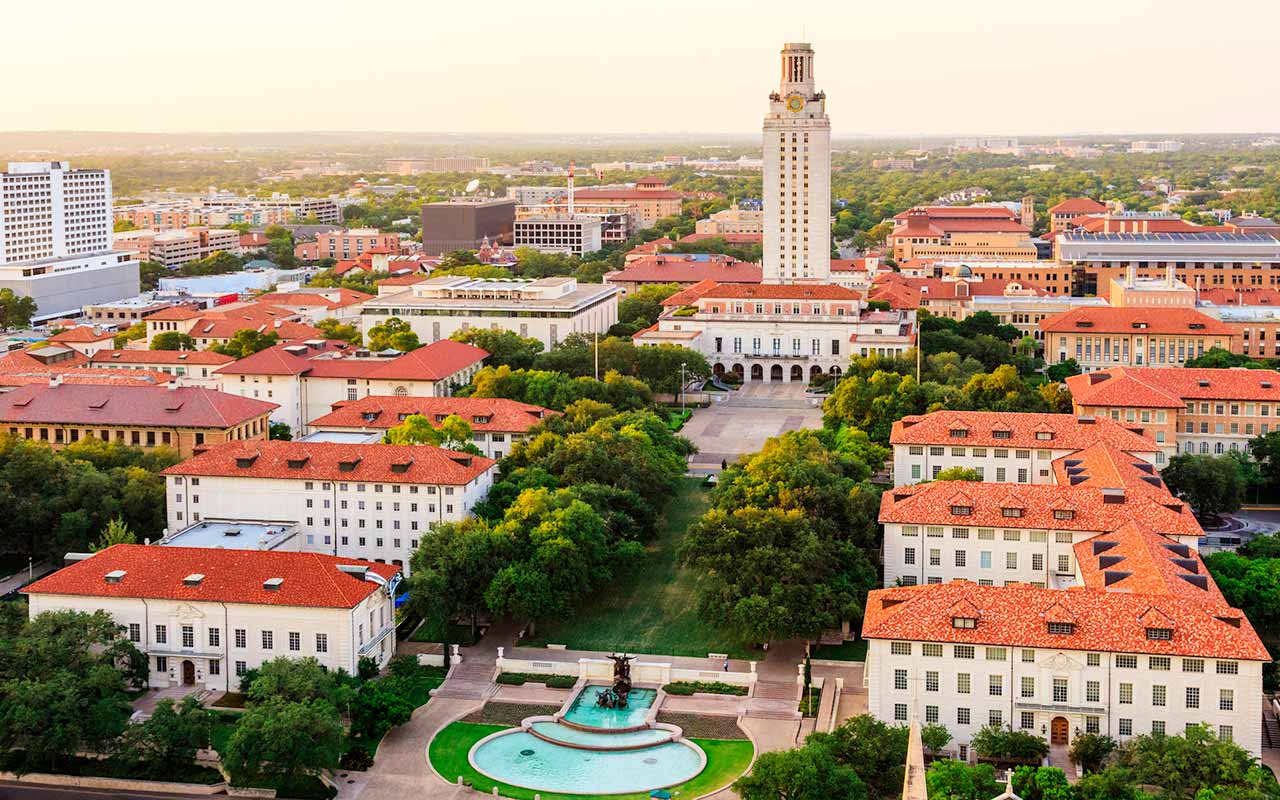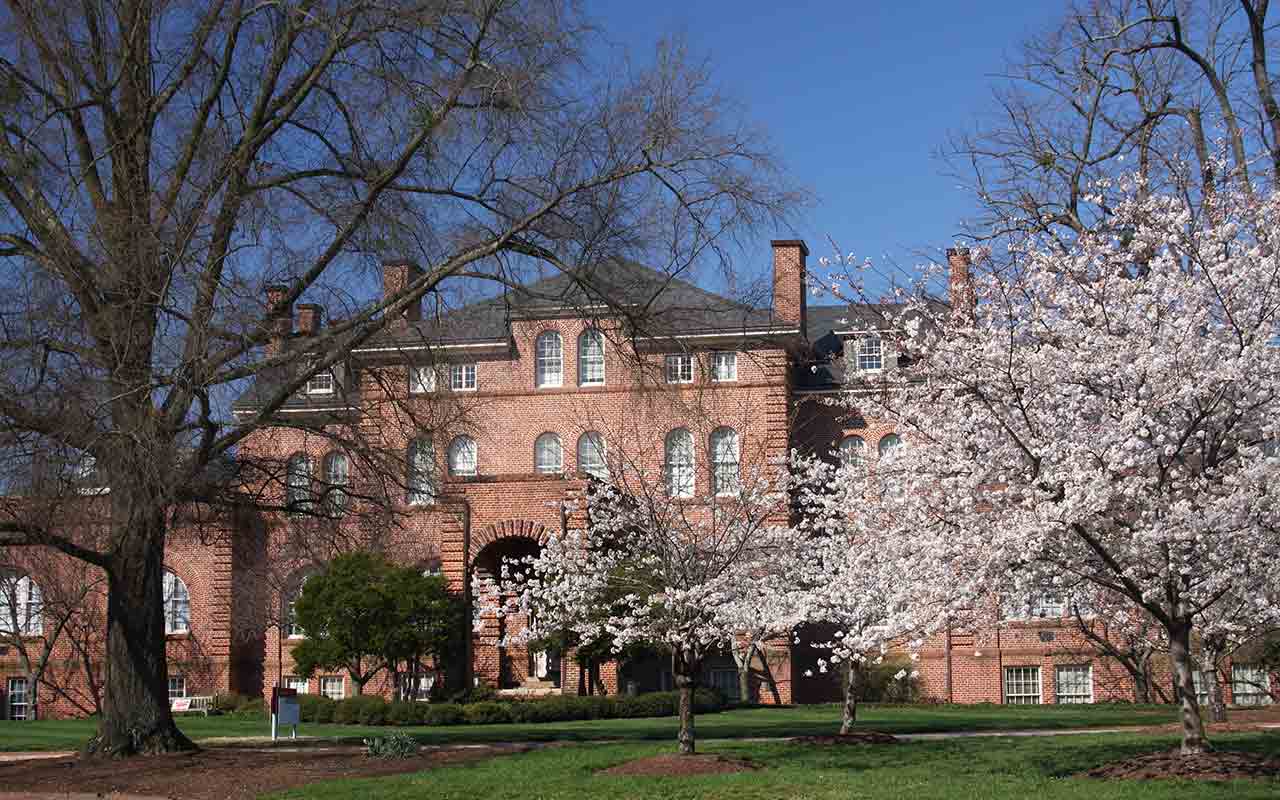10 Best Values in Public Colleges, 2018
Attending a public college in your home state, rather than an out-of-state public college or a private institution, continues to be an effective way to cut college costs.


Attending a public college in your home state, rather than an out-of-state public college or a private institution, continues to be an effective way to cut college costs. For the 2017–18 academic year, the average annual sticker price for in-state students attending four-year public colleges was $20,770, including tuition, fees, and room and board, according to the College Board. That's less than half the average sticker price of private schools ($46,950 in 2017–18) and about 40% less than the average cost for out-of-state students attending a public college ($36,420).
To help you weigh your options, we present our annual list of best public colleges. The schools that earn top honors on our public colleges list range from small schools to immense flagship universities, but they all meet our definition of value: a high-quality education at an affordable price. We start by looking for schools with strong academics, including a competitive admission rate, a low student-faculty ratio and a high four-year graduation rate. On the financial side, we look for schools with reasonable price tags, solid financial aid for students who qualify and low average debt among students who borrow. For our public colleges list, we rank the schools according to in-state costs and calculate out-of-state costs separately for the out-of-state ranking.
These 10 schools lead the pack among public colleges.

1. University of North Carolina at Chapel Hill
- Location: Chapel Hill, N.C.
- Undergraduate enrollment: 18,523
- Four-year graduation rate: 84%
- Total annual cost: $22,165 in-state; $47,748 out-of-state
- Total net cost (for students who qualify for aid): $4,905 in-state
- Average debt at graduation: $20,852
Strong academics and robust financial aid awards have made the University of North Carolina at Chapel Hill a perennial winner in Kiplinger's best-value rankings. UNC, which has led the pack of public colleges 17 times (as many times as Kiplinger's has ranked public colleges), also claims the title of best out-of-state value in 2018. Stellar academics, including an 84% four-year graduation rate (among the highest of all 100 public colleges on our list) and a 13-to-1 student-faculty ratio, help the Tar Heels cement their spot at the top.
UNC's in-state sticker price is comparable to that of other public colleges, but need-based aid awards for in-state students who qualify average more than $17,000 a year, slashing the school's sticker price by 78% to less than $5,000 a year. UNC is one of only two public colleges on our list to meet 100% of students' demonstrated financial need. Much of this aid is awarded in the form of scholarships and grants, which don't have to be repaid, rather than loans, which helps reduce student borrowing. About 40% of students borrow, but the average debt of those who do is less than $21,000.

2. University of Florida
- Location: Gainesville, Fla.
- Undergraduate enrollment: 34,554
- Four-year graduation rate: 67%
- Total annual cost: $17,501 in-state; $39,779 out-of-state
- Total net cost (for students who qualify for aid): $10,418 in-state
- Average debt at graduation: $21,645
The University of Florida moves up five places this year to nab the second spot on our public colleges list. Aiding the Florida Gators in their climb: stronger test scores than in past years (21% of incoming freshmen score 700 or higher on the critical reading portion of the SAT, while 26% score top marks on the math portion) and financial aid packages that do a better job of meeting students' demonstrated financial need. Nearly half of students who are offered admission enroll, which is the highest percentage among the top 10 schools on our in-state public colleges list.
With the lowest in-state sticker price on our list of top 10 public colleges for in-state students, the University of Florida is an attractive option for families who don't expect to qualify for need-based aid. For those who do qualify, an average award of more than $7,000 a year cuts the school's in-state sticker price by 40%. And for Florida residents with strong academic records, the state's Bright Futures Scholarship program helps cover tuition and fees. The second-largest public university in our top 10 offers 14 colleges of specialized study and more than 100 undergraduate majors, including finance, marine sciences, natural resource conservation, and tourism, events and recreation management. The university is also a national hub for medical and scientific research.

3. University of Virginia
- Location: Charlottesville, Va.
- Undergraduate enrollment: 16,331
- Four-year graduation rate: 88%
- Total annual cost: $29,321 in-state; $59,856 out-of-state
- Total net cost (for students who qualify for aid): $8,341 in-state
- Average debt at graduation: $24,598
This "Academical Village," founded by Thomas Jefferson in 1819, excels in our rankings for its blend of academic quality and affordability. The University of Virginia, which admits 30% of applicants, promotes self-governance and responsibility among students who are expected to adhere to the school's honor code. UVA deserves special kudos for its ability to get students to graduation day on time, sparing families the expense of an extra year of attendance. The school's 88% four-year graduation rate is the highest of all 100 public colleges on our list.
Generous need-based financial aid awards help UVA rack up points on the financial side of the equation, too. UVA is one of only two schools on our list of 100 public colleges to meet 100% of students' demonstrated financial need (the other is the University of North Carolina at Chapel Hill). An average need-based aid award of nearly $21,000 reduces the cost of attendance for in-state students who qualify to about $8,300 a year. Only about a third of students take out loans, one of the lowest percentages of student borrowers on our public colleges list.

4. University of Michigan
- Location: Ann Arbor, Mich.
- Undergraduate enrollment: 28,964
- Four-year graduation rate: 76%
- Total annual cost: $27,072 in-state; $59,722 out-of-state
- Total net cost (for students who qualify for aid): $9,399 in-state
- Average debt at graduation: $25,712
The University of Michigan ascends one spot on our 2018 list of best in-state values, thanks to a dramatic increase in the school's four-year graduation rate and modest cost increases. The school accepts 29% of applicants, and more than 40% of students who are offered admission enroll. Among incoming freshmen, 74% score 30 points or more on the ACT, and an impressive 97% of first-year students return to campus for their sophomore year. Once on campus, students can select from 250 degree programs and more than 1,500 clubs and organizations.
Michigan's in-state sticker price is on par with the national average ($20,770). But the average net price for in-state students who qualify for need-based aid is roughly one-third of the school's in-state sticker price. About 40% of students report borrowing, and the average debt among those who do borrow is slightly lower than the national average among public school borrowers ($27,000).

5. University of California, Berkeley
- Location: Berkeley, Calif.
- Undergraduate enrollment: 29,047
- Four-year graduation rate: 76%
- Total annual cost: $30,780 in-state; $58,794 out-of-state
- Total net cost (for students who qualify for aid): $13,548 in-state
- Average debt at graduation: $18,789
Fierce competition for admission helps UC Berkeley secure its place in our top 10. Just 17% of applicants are admitted, the most competitive rate of all 100 public colleges on our best values list. More than 40% of students who are offered admission enroll. And among incoming freshmen an impressive 47% score 700 or higher on the critical reading portion of the SAT, and 60% score top marks on the math section.
Despite having one of the highest in-state sticker prices of all 100 public colleges on our list, UC Berkeley's generous financial aid awards help make a Berkeley education affordable for many families. More than half of students qualify for need-based aid, and the average need-based-aid award cuts the school's in-state sticker price by 56% for students who qualify. Less than 40% of students report taking out loans, and the average debt among those who do borrow is among the lowest of all 100 public colleges on our list.

6. University of California, Los Angeles
- Location: Los Angeles, Calif.
- Undergraduate enrollment: 30,873
- Four-year graduation rate: 74%
- Total annual cost: $30,066 in-state; $58,080 out-of-state
- Total net cost (for students who qualify for aid): $10,489 in-state
- Average debt at graduation: $21,323
UCLA holds steady this year at number six on our in-state best values list. Competition to attend the largest school in the University of California system is stiff. The school draws more than 97,000 applicants (the most of any of the other 300 schools on our best values list) and admits just 17% of those who apply. Among incoming freshmen, 27% score 700 points or higher on the critical reading portion of the SAT and 42% score top marks on the math portion. Once they enroll (nearly 40% of admitted students do), Bruins can select from more than 125 majors and participate in any of more than 1,000 clubs and student organizations. And the school's location in the Westwood neighborhood of Los Angeles offers students easy access to downtown for internships and job opportunities.
Generous financial aid also helps UCLA perform well in our rankings. More than half of students receive need-based aid; the average annual award of $19,577 cuts the school's in-state sticker price by 65%. About 40% of students report borrowing, and the average debt among those who do is $5,700 lower than the national average among public school borrowers.

7. University of Washington
- Location: Seattle, Wash.
- Undergraduate enrollment: 30,933
- Four-year graduation rate: 65%
- Total annual cost: $23,916 in-state; $48,480 out-of-state
- Total net cost (for students who qualify for aid): $8,916 in-state
- Average debt at graduation: $21,900
A reasonable in-state sticker price and ample financial aid helped the University of Washington move up five places this year to land the seventh spot on our list of in-state values. About a third of students receive need-based aid, and the average award for those who qualify slashes the school's sticker price by 63%.
This large public research university, located on 643 acres just north of downtown Seattle, accepts 45% of applicants, and roughly a third of those who are offered admission enroll. Once on campus, Huskies can choose from more than 2,000 courses each quarter that span 180 different academic majors. Outside of class, students can participate in any of roughly 800 student organizations or venture away from campus to explore Green Lake or Lake Washington, hike nearby Mount Si or Tiger Mountain, or explore the city of Seattle.

8. University of Texas at Austin
- Location: Austin, Tex.
- Undergraduate enrollment: 40,168
- Four-year graduation rate: 55%
- Total annual cost: $21,130 in-state; $47,476 out-of-state
- Total net cost (for students who qualify for aid): $11,543 in-state
- Average debt at graduation: $25,338
The University of Texas at Austin, the largest school in our public college in-state values list, moves up five places this year to break into the top 10. The school, which is the flagship campus of the state's system, racks up points on the quality side of the equation with a 40% admittance rate, solid test scores among incoming freshmen and a 95% freshman retention rate. After arriving on the school's 432-acre main campus, Longhorns can select from more than 12,400 academic courses in more than 170 fields of undergraduate study. On the financial side, nearly 40% of students receive need-based aid. The average award for those who qualify reduces the net price that families pay to less than $12,000 a year.

9. North Carolina State University
- Location: Raleigh, N.C.
- Undergraduate enrollment: 23,847
- Four-year graduation rate: 47%
- Total annual cost: $20,994 in-state; $39,342 out-of-state
- Total net cost (for students who qualify for aid): $10,990 in-state
- Average debt at graduation: $21,507
NC State jumps nine places to break into the top 10 of our in-state best-values list, thanks to a reasonable sticker price and ample financial aid. More than 40% of students qualify for need-based aid, and the average award amount of $10,004 cuts the school's in-state sticker price nearly in half. Almost half of students make it to graduation without taking student loans, but among those who do report borrowing, the average debt is roughly $5,500 less than the national average for public school borrowers.
On campus, located just west of fast-growing Raleigh's downtown, students can select from nearly 100 majors and more than 120 minors. Members of the Wolfpack can also participate in any of more than 900 student organizations that run the gamut from improv comedy to building robots. The school's proximity to North Carolina's research triangle—a hot spot for tech companies including IMB, Cisco Systems and GlaxoSmithKlein—is a boon for many students seeking internships and recent grads looking for jobs.

10. University of Maryland, College Park
- Location: College Park, Md.
- Undergraduate enrollment: 28,472
- Four-year graduation rate: 69%
- Total annual cost: $23,731 in-state; $46,938 out-of-state
- Total net cost (for students who qualify for aid): $14,287 in-state
- Average debt at graduation: $27,559
Strong academics, including a solid four-year graduation rate and a 16-to-1 student-faculty ratio, earn the Terrapins the 10th spot on our in-state public colleges list. UMCP, located between Washington, D.C., and Baltimore, attracts and keeps talented students. Among incoming freshmen, 24% score 700 or higher on the critical reading portion of the SAT, while nearly 40% do so on the math portion. An impressive 95% of students return to campus for their sophomore year. A reasonable sticker price and generous financial aid also help UMD perform well in our rankings. Nearly 40% of students qualify for need-based aid; the average annual award cuts the school's in-state sticker price by 40%. More than half of students graduate without taking out student loans.
Profit and prosper with the best of Kiplinger's advice on investing, taxes, retirement, personal finance and much more. Delivered daily. Enter your email in the box and click Sign Me Up.

-
 Changes Are Coming for This Invesco Bond Fund
Changes Are Coming for This Invesco Bond FundThe Invesco BulletShares 2026 Corporate Bond ETF's bonds will mature in 2026. Here's what investors should do.
-
 What Science Reveals About Money and a Happy Retirement
What Science Reveals About Money and a Happy RetirementWhether you’re still planning or already retired, these research-based insights point the way to your best post-work life.
-
 7 Retirement Planning Trends: What They Mean for You in 2026
7 Retirement Planning Trends: What They Mean for You in 2026From government shutdowns to market swings, the past 12 months have been nothing if not eventful. The key trends can help you improve your own financial plan.
-
 What to Do With Your Tax Refund: 6 Ways to Bring Growth
What to Do With Your Tax Refund: 6 Ways to Bring GrowthUse your 2024 tax refund to boost short-term or long-term financial goals by putting it in one of these six places.
-
 What Does Medicare Not Cover? Eight Things You Should Know
What Does Medicare Not Cover? Eight Things You Should KnowMedicare Part A and Part B leave gaps in your healthcare coverage. But Medicare Advantage has problems, too.
-
 15 Reasons You'll Regret an RV in Retirement
15 Reasons You'll Regret an RV in RetirementMaking Your Money Last Here's why you might regret an RV in retirement. RV-savvy retirees talk about the downsides of spending retirement in a motorhome, travel trailer, fifth wheel, or other recreational vehicle.
-
 The Six Best Places to Retire in New England
The Six Best Places to Retire in New Englandplaces to live Thinking about a move to New England for retirement? Here are the best places to land for quality of life, affordability and other criteria.
-
 The 10 Cheapest Countries to Visit
The 10 Cheapest Countries to VisitWe find the 10 cheapest countries to visit around the world. Forget inflation and set your sights on your next vacation.
-
 15 Ways to Prepare Your Home for Winter
15 Ways to Prepare Your Home for Winterhome There are many ways to prepare your home for winter, which will help keep you safe and warm and save on housing and utility costs.
-
 Six Steps to Get Lower Car Insurance Rates
Six Steps to Get Lower Car Insurance Ratesinsurance Shopping around for auto insurance may not be your idea of fun, but comparing prices for a new policy every few years — or even more often — can pay off big.
-
 How to Increase Credit Scores — Fast
How to Increase Credit Scores — FastHow to increase credit scores quickly, starting with paying down your credit card debt.
